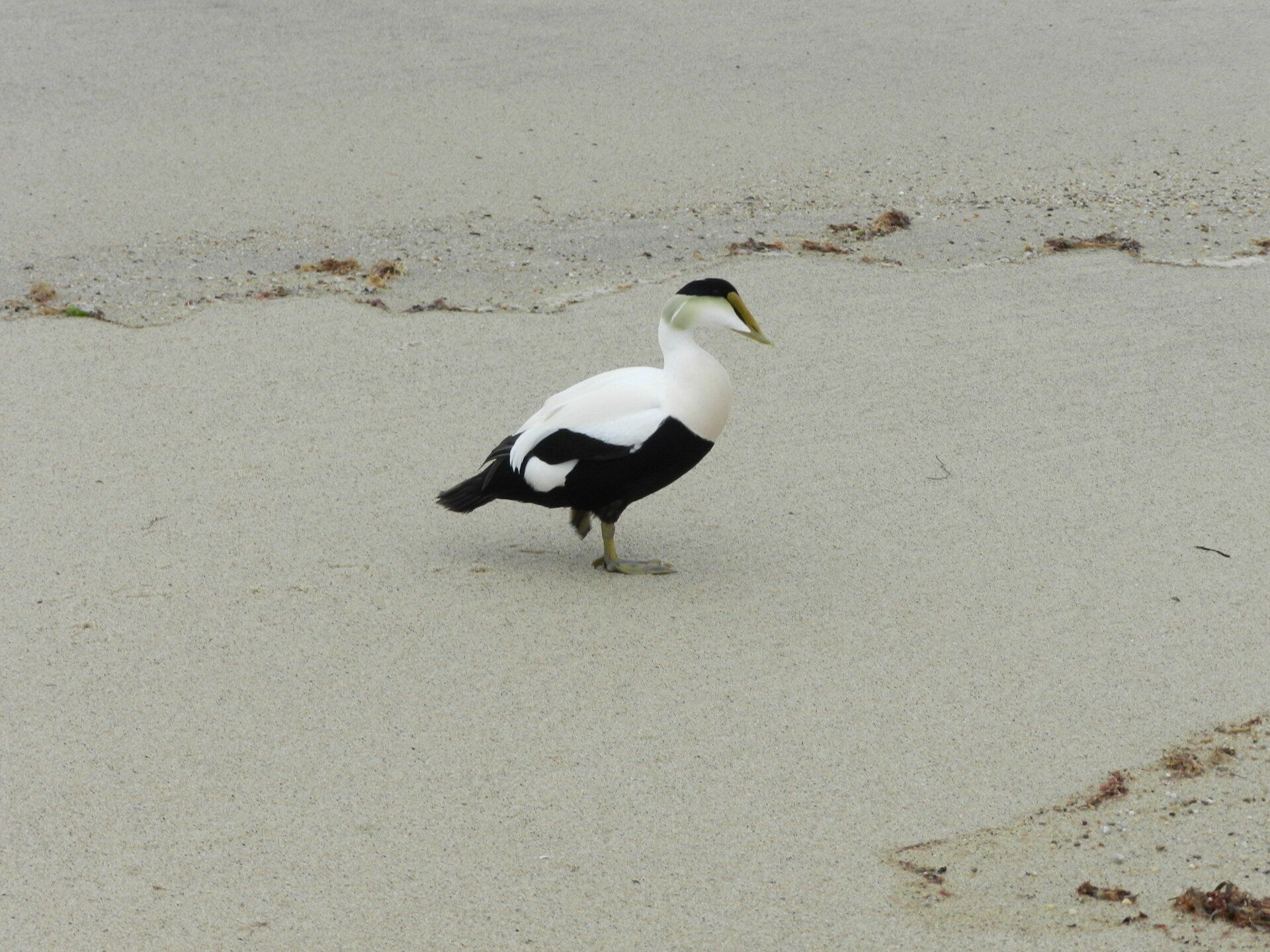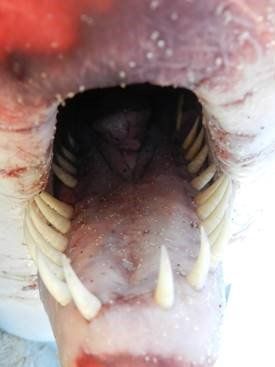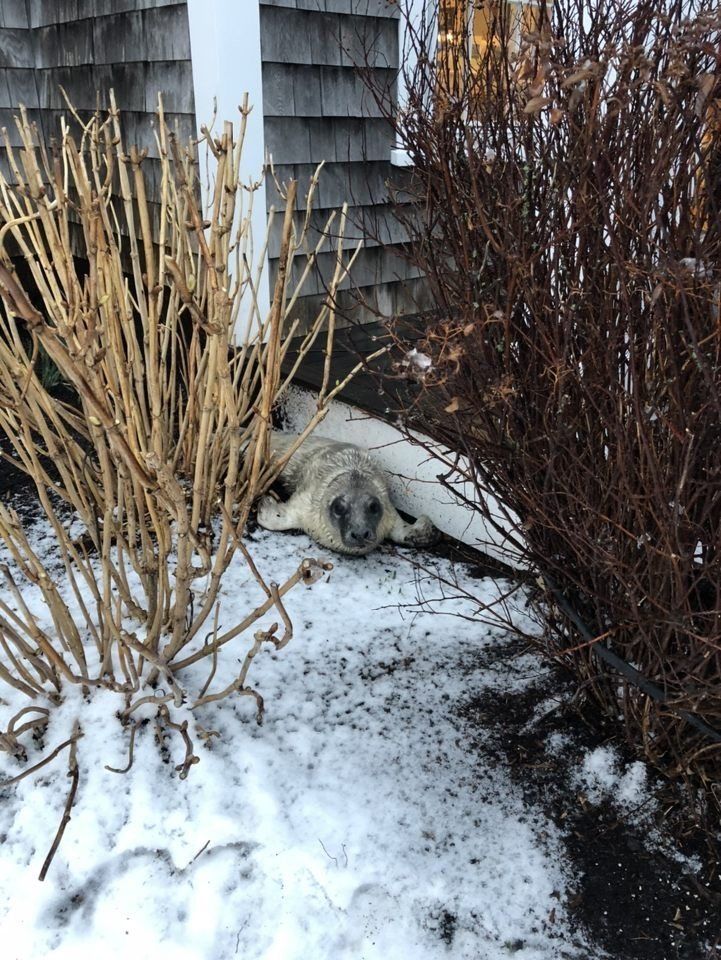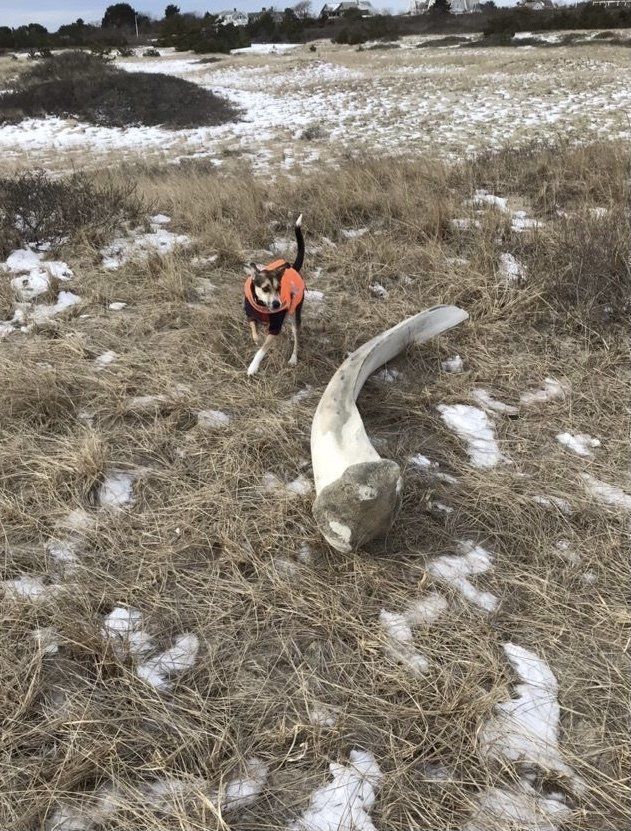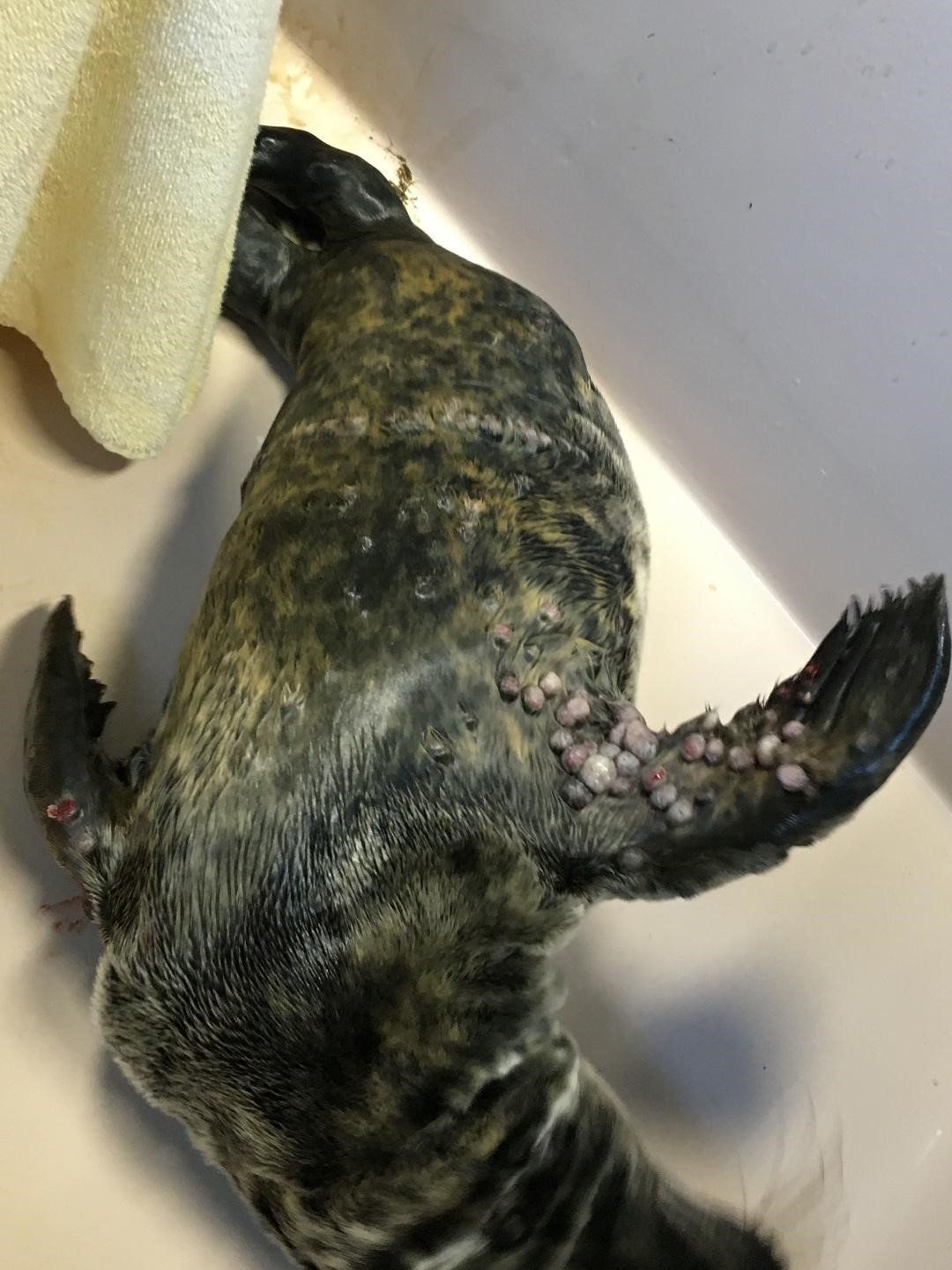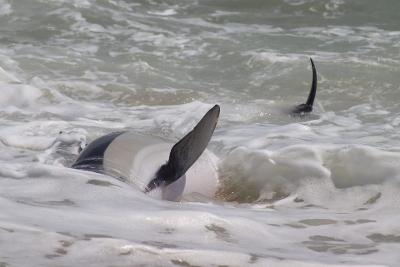Pox Virus in Pinnipeds and Cetaceans
Some marine mammal skin diseases have a zoonotic potential to stranding team members and the general public. In one report out of the University of Florida, these skin diseases can "result in localized skin infections in man that either resolve spontaneously or with appropriate medical therapy". They may be viral, fungal or bacterial in origin. Two viral infections that occur in marine mammals have been recently seen on Nantucket and will be discussed here. Pox viruses are generally considered host specific, but as with most things in life, there are exceptions.
Pinnipeds
In 1986, the California Marine Mammal Center reported of a case of seal pox that crossed species in their facility by being transferred from Harbor seals to Elephant seals and then to their captive seal lion patients. In 1987, a report was published of a seal handler who contracted seal pox from a captive gray seal under his care. Although the virus is highly contagious between seals, the potential for human infection is low. Most human cases are seen in people who have close contact with seals in rehab facilities. People usually get single nodules, often painful and may be accompanied by fever, myalgia and fatigue. The virus can be spread by direct contact with the virus from affected seals, from contaminated facilities, contaminated slickers, boots, feeding utensils, contaminated water as well as insects acting as vectors.
The seal pox virus has an incubation period of 3-5 weeks.The lesions start out as small firm nodules .5-2cm in diameter and .2-1cm in elevation. Nodules can be located anywhere on the body including the mouth, with the highest number appearing on the underside of the abdomen and the palmar surface of the front flippers. The nodules will eventually ulcerate and exude a small amount of purulent fluid then slowly regress leaving a darkly pigmented area of alopecia. Lesions will present themselves for 6-8 weeks, then take 2-8 weeks to regress. In the wild, seal pox is usually seen in juveniles since young pups are believed to be protected by maternal antibodies and adults have probably already been infected, recovered and are protected by their own antibodies.
When dealing with seal pox in rehabilitation facilities, strict sanitation measures are in order. Avoiding stress which can lower a patient's resistance, antibiotics to control secondary infection and antivirals like cidofovir (blocks viral replication) may be used. Most cases are self limiting and get better on their own.
Cetaceans
Pox occurs in whales, dolphins and porpoises and looks very different than pinniped pox. Most pox lesions are commonly seen in the area of the head, pectoral flippers, dorsal fin and tail fluke. Generally pox in cetaceans is not felt to cause significant systemic disease although its pathogenesis needs further study. It is often felt that stress, poor water quality, environmental contamination with chemicals or other significant underlying infections may be associated with cetacean pox.
Pox lesions in dolphins are described as ring, pin hole or tattoo lesions.The lesion that we observed on Nantucket was in a bottle nosed dolphin (Tursiops truncatus) that washed up deceased on the Point of the Breakers in 2019. There were tiny black dots that formed a ring like design with many of them coalescing into a larger design pattern. These lesions may persist for months to years. Unlike pinniped pox, cetacean pox is not know to infect people.

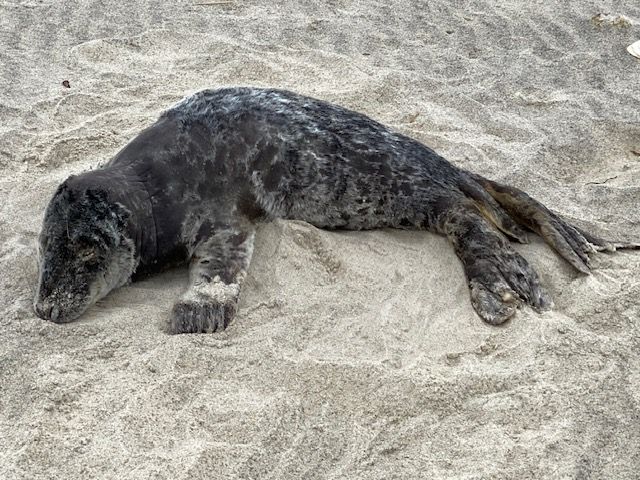
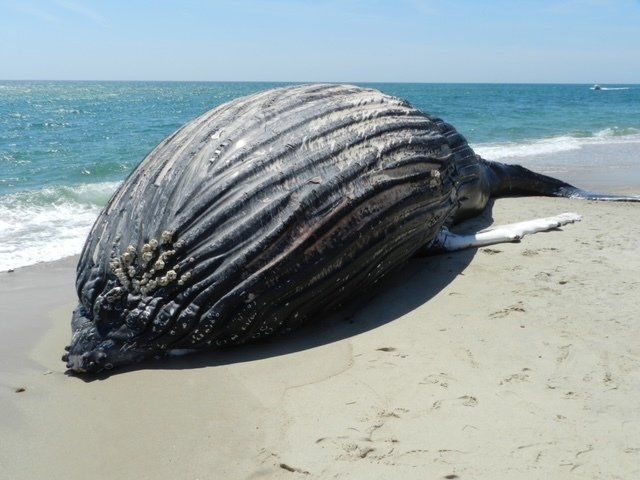

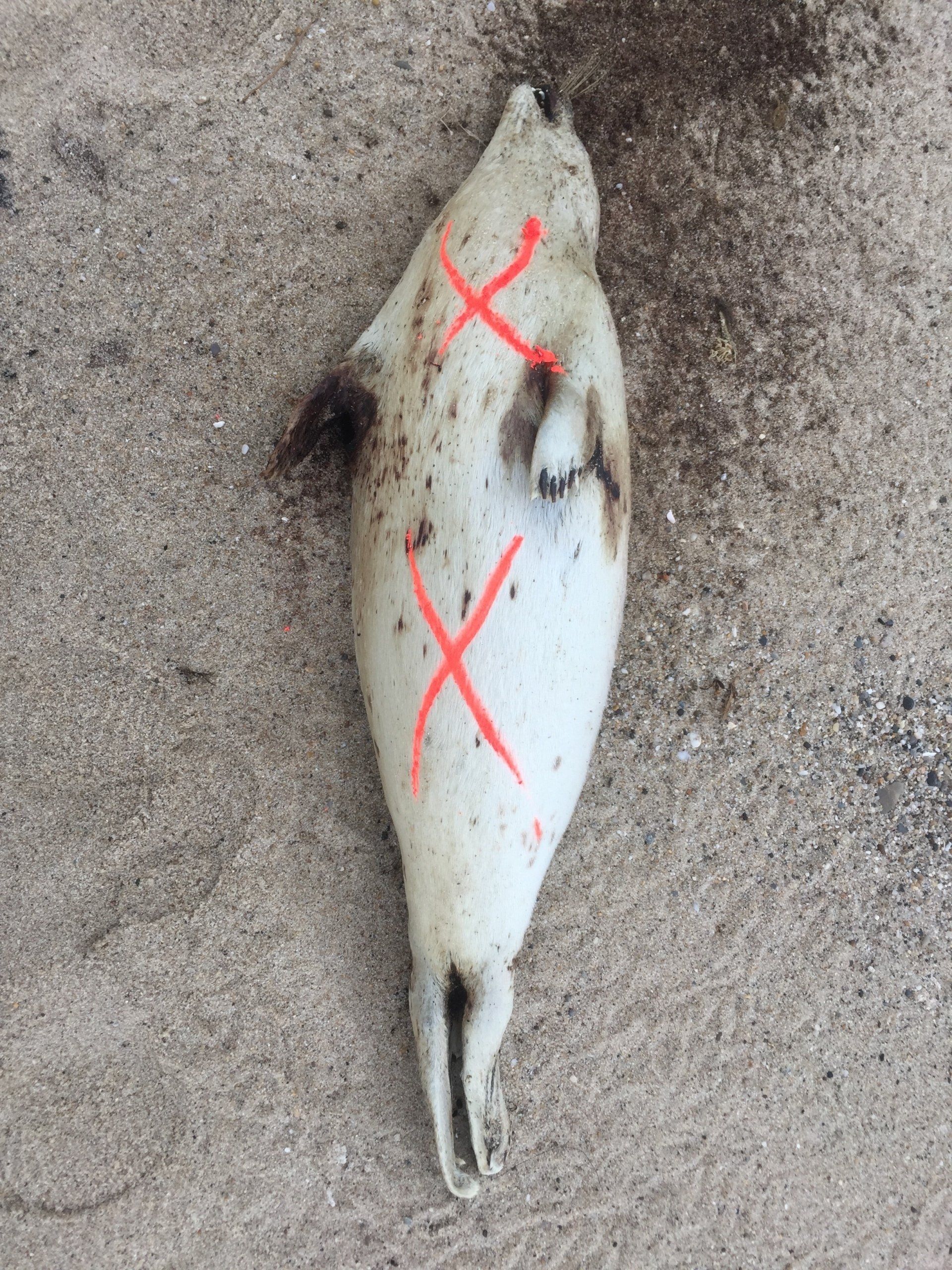
Marine Mammal Alliance Nantucket’s Stranding Team’s Duties when a Dead Seal is Reported on the Beach
